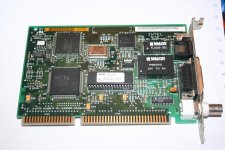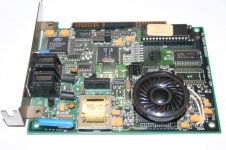You're not talking about just writing the autoexec.bat and config.sys files are you? To my twisted thinking you first need to design a file structure using a logic that suits you. Then you can do the rest.
My preference is for clean and simple. YMMV My C:\ drive only has two directories and the autoexec.bat and config.sys files are hidden and read only. The directory looks like this:
Code:
Volume in drive C is ANA-C
Volume Serial Number is 5F9B-C40D
Directory of C:\
PATH EDC 7,866 04-05-12 12:14a
SYS <DIR> 10-08-11 4:38a
TMP <DIR> 10-08-11 4:38a
3 file(s) 7,866 bytes
525,672,448 bytes free
C:\ $
Of course that's a larger machine, but I use the same kind of structure on vintage stuff. The TMP is just that, but the SYS directory is all the system files. Here is the tree:
Code:
C:\ $tree
Directory PATH listing for Volume ANA-C
Volume Serial Number is 5F9B-C40D
C:.
----SYS
- ---- ANA
- - ----NOHD
- - ----ANATEMP
- ----0
- ----1
- ----2
- ----F
- ----MS
- - ----ARC
- ----CFG
- - ----BOOT
- - ----WATTCP
- - ----MTCP
----TMP
The directories named 0, 1, and 2, are all the utilities which are likely to be used on the system, or deemed to currently be useful. On an XT it is probably adequate to just use the SYS directory and skip the subs. On a true vintage machine running, say 2.1, I would include all the files in one /OS directory. The MS directory contains the MS-DOS 6.22 files which are to be in the path and the ARC subdirectory of that is all the other MS utilities and things which I don't want to see (which is most of it). The CFG directory is where I keep configurations such as the WATTCP and mTCP ones (with old ones and a bit of related stuff). The BOOT directory is where COMMAND.COM resides and several levels of autoexec.bat and config.sys are backed up. Every time I edit these files, they are automatically backed up so I can go back a couple of levels if I want. It's just easier (and more relaxing) that way.
Now, the one I haven't mentioned yet, is the C:\SYS\F directory. That is the heart of the machine. That is where I put all my BAT files on which my personal interface depends. One of the first ones that I write is one called SF.BAT. Typing "sf" gets me to that directory so I can add more .BAT files quickly. I do that whenever I need to have a program starter. For example running LYNX requires that DHCP gets started and stopped as well as just running the executable. Most are extremely simple with under 5 lines, but some are more complex, like the AE and CE (autoexec.bat edit, config.sys edit) commands which need to change attributes on the way in and on the way out, as well as rename and delete the backups and so on. I also add sounds to most of my bats so I can tell if they've started or completed. This allows me to not have to waste my eyes on looking on the screen all the time and makes it easy to concentrate on the real task at hand which is generally more mind oriented than a visual exercise. Anyway, this directory currently has about 80 commands but is always growing. The thing is that I've got a naming system and I write them myself so I am likely to remember. If I don't, the I just type "df" and have a look by subsequently typing "dm".
All programs go on the D: drive, and data and other projects go on other drives. However, on a small machine I would probably just use a D: drive. Here is mine:
Code:
Volume in drive D is ANA-D
Volume Serial Number is 5D9C-88AF
Directory of D:\
TEXT <DIR> 10-08-11 4:46a
LANG <DIR> 10-08-11 4:46a
COMP <DIR> 10-08-11 4:46a
INFO <DIR> 10-08-11 4:46a
PROG <DIR> 10-08-11 4:46a
SCRN <DIR> 10-08-11 4:46a
COMM <DIR> 10-08-11 4:46a
7 file(s) 0 bytes
378,052,608 bytes free
D:\ $
I won't bother with the tree for that since it is extensive and irrelevant. Needless to say both these drives have lots of stuff in them. It is just arranged in a neat and logical order. Partial CHKDSK output:
Code:
C:\
122,880 bytes in 15 directories
8,437,760 bytes in 361 user files
D:\
1,949,696 bytes in 236 directories
154,320,896 bytes in 2,568 user files
When all that is decided upon, then it is obvious that the path needs to be set only to a few directories on the system (C: ) drive. The other thing which needs to be set is the environment. That is when you need to think about your DOS configuration files. One trick is that you put environmental variables such as your prompt, substitutions (if any), and SET, at the end of your autoexec.bat after all the TSRs or whatever, so that they don't get loaded multiple times.
So, there's some of my philosophy on how to set up a DOS box. YMMV






